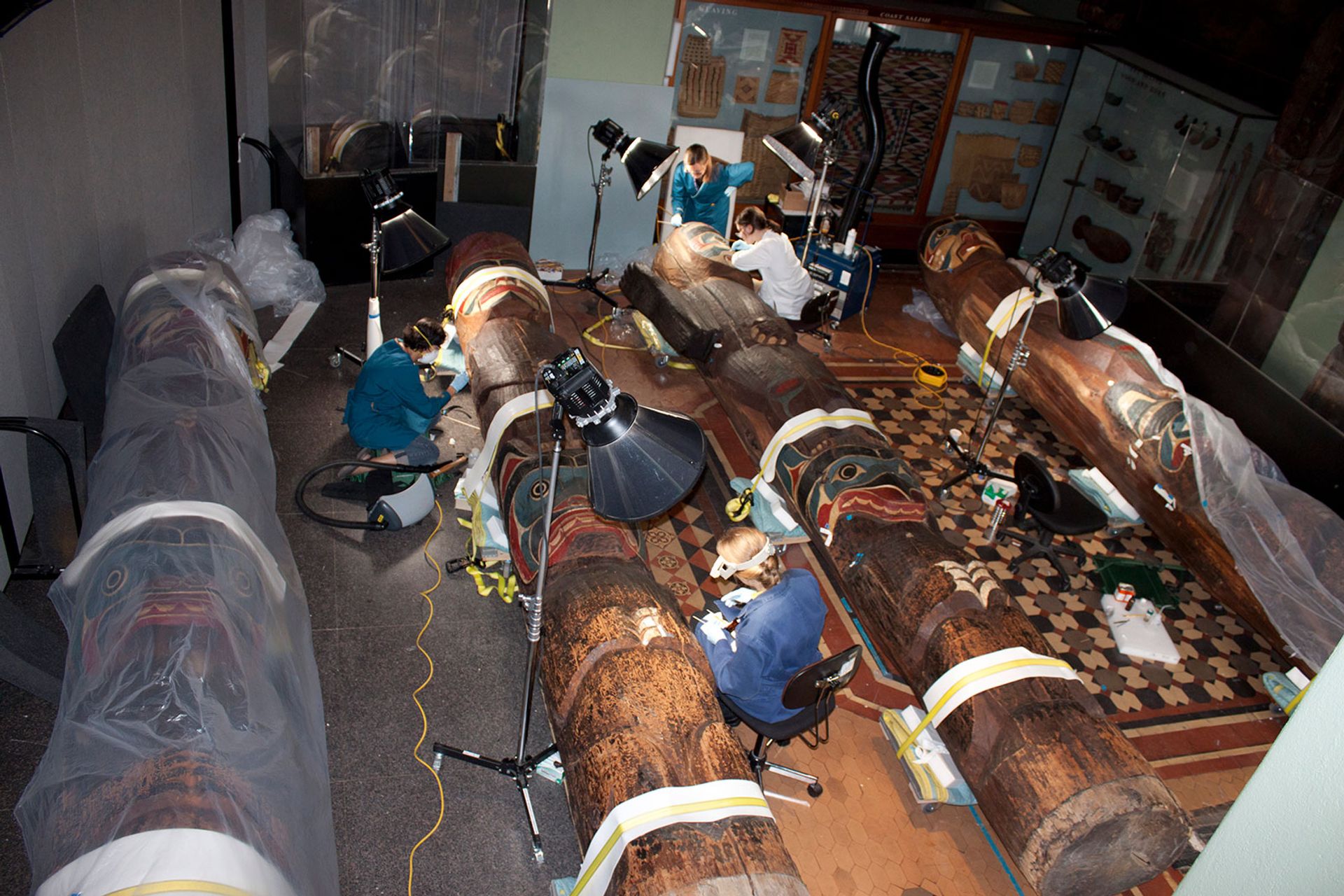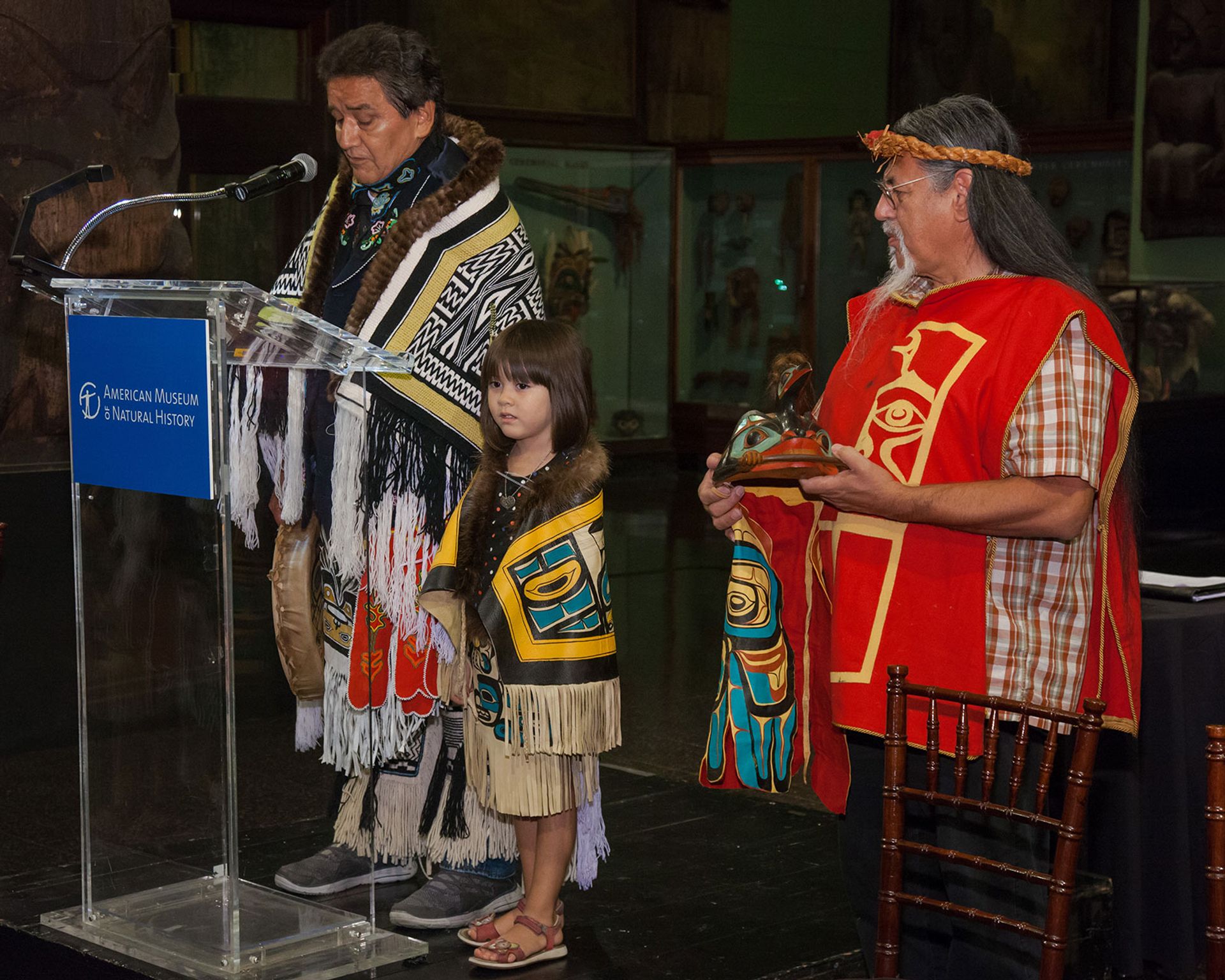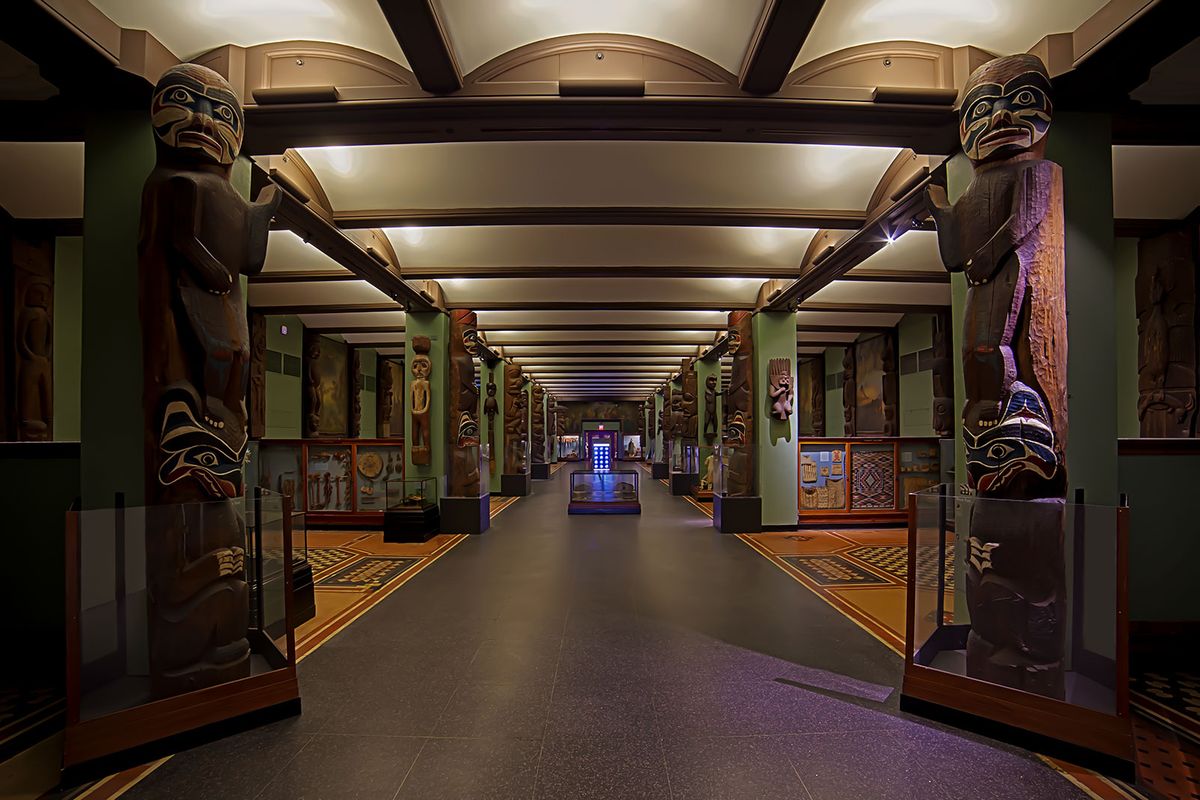The American Museum of Natural History in New York has announced a multi-year $14.5m renovation project to enhance the Northwest Coast Hall and conserve and catalogue some of the nearly 9,000 indigenous American objects in its collection. The hall—the museum’s first gallery—was built in 1899 under the direction of the German-American anthropologist and curator Franz Boas, who conducted fieldwork with Native American communities of the Pacific Northwest in the late 1880s.
The gallery currently includes an assortment of artefacts—including totem poles, ceremonial masks, textiles, pipes and other objects—that have not been preserved since they arrived in the Upper West Side museum, and most remain unlabeled. In the first phase of the project, around 1,800 objects in the collection will be conserved and digitally catalogued. The museum and its team of conservators will consult with First Nation members, including members of the Haida and Tlingit nations, among others, throughout the process.

AMNH/ C. Chesek
Some objects will be returned to their respective groups to be replicated—like a carved wooden Haida chest, which the museum loaned for a potlach ceremony and exhibition in British Columbia, Canada—and the originals will later return to the museum. The first phase of the project will be to conserve six of the 78 wooden totem poles that the museum owns, which conservators predict will take around 18 months, with more projects being rolled out in the coming months.
Many of these objects were just legends to us before we came here and saw them firsthandKa-xoo-auxch/Garfield George, head of the Raven Beaver House of Angoon, Alaska
“Someone asked me just very recently whether it’s hard to see these objects in a museum,” said Ka-xoo-auxch/Garfield George, the head of the Raven Beaver House of Angoon in Alaska, during a press conference last week. “And yes, it is hard, but, many of these objects were just legends to us before we came here and saw them firsthand.” One example is a canoe prow that the museum repatriated to the tribe in 1999. “When Angoon was destroyed in October 1882, the [US Navy] gathered all of our canoes and set them on fire, along with our village,” George said. “That’s the only canoe that survived, and when we saw it here again, we were amazed to see this crest of Angoon in the safe care of an institution.”

AMNH/M. Shanley
Beyond beautifying the hall and conserving the collection, the museum hopes to educate visitors on the “less palatable” history of the objects, and to better present these varied indigenous communities as distinct and living cultures rather than a singular ethnographic group, said Peter Whiteley, the museum’s curator of North American Ethnology, during the press conference. The revamped hall, designed by the New York City-based architecture firm wHY, will also contain works of art by contemporary Native American artists, such as George Hunt. The museum hopes to complete the first steps of the project by 2020, to coincide with its 150th anniversary.
“I still stand in awe of this famous hall, its history, its resonance and its landmark importance to New York City and the world for its communication of First Nation ideas and practices, and for its central value of cultural tolerance and mutual respect, [which] offers a window into other ways of seeing and other ways of being”, Whiteley added. “In renovation, we seek to enhance these impacts from a current perspective, not ignoring the sometimes problematic history of collecting that effects this hall and all others of the period”.
The project is being supported in part by the Eugene V. and Clare E. Thaw Charitable Trust, the Andrew W. Foundation, the Institute of Museum and Library Services and the Gilbert & Ildiko Butler Family Foundation.


